15 December, 2003
Minna Bluffs/Mt. Discovery
We woke up this morning to find calm winds, bluer
skies, and much warmer temperatures. We also
discovered that we’d chosen a beautiful site to set up
camp. To the north of our tents we could see Mt.
Erebus and to the West Mt. Discovery. After a
leisurely breakfast we unhooked the sleds and set out
on our ski-doos for our first sampling site. Our
mountaineer, Brain, determined a better route to reach
land and without our sleds traveling over the pressure
ridges was much easier.
Minna Bluff’s clay-like dirt, relatively “close”
mountainous peeks, and glacial ice and cracks were a
stark contrast from my experience in the Dry Valleys.
In some ways this was easier. Distances are not as
deceiving and it didn’t take as long to hike to the
next desired location. On the other hand, the glacial
ice can be extremely difficult on which to walk. When
the ice is exposed, it is very slippery. Often, parts
were very thin and broke as our feet hiked over it.
Also, there are numerous cracks, which are often
uneasily detected due to blown over snow and
re-healing. Even though we had all taken our sea ice
training, we felt much better having Brian there to
point out the areas over which we had to cross
carefully. Hiking was even more difficult as we had to
do it in our bunny boots instead of our hiking boots.
Even though we were careful there were still a few
tumbles, but thankfully the only damage was a hurt
finger and a few bruises.
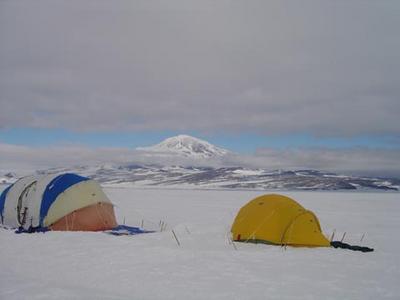
1. A view of our camp today. Mt. Discovery is in the background.
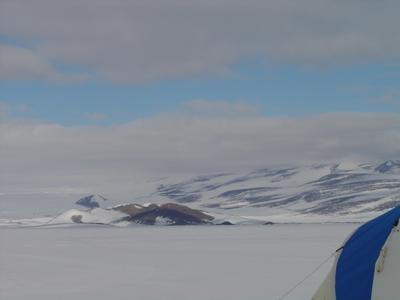
2. A view of our sampling area as seen from our tent. We went to one of the VERY tiny peeks seen in the front of the larger brown peek. This distance was about 7 km. How many miles is this?
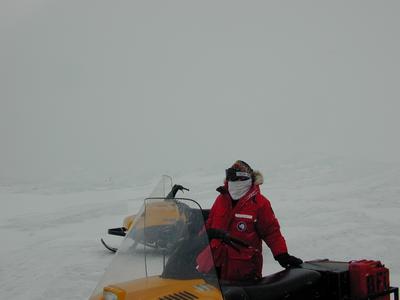
3. Me standing by a skidoo trying to cross some of the icy pressure ridges on the way to Minna Bluffs. If you look closely you can see the definition of the pressure ridges over which we had to cross.
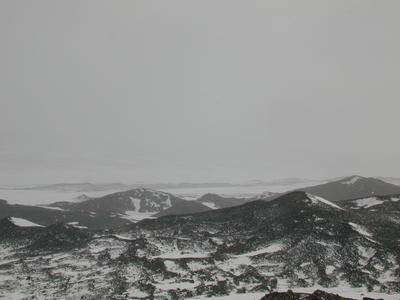
4. Minna Bluffs

5. Up close the pressure ridges and the glacial ice over which we had to walk looked like this. This is very rough and bumpy. Notice the blue hue to the ice. Glacial ice is much more compressed and often has a bluer tint.
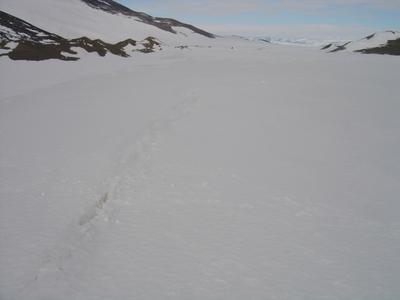
6. Do you notice the crack in this picture? Look closely!
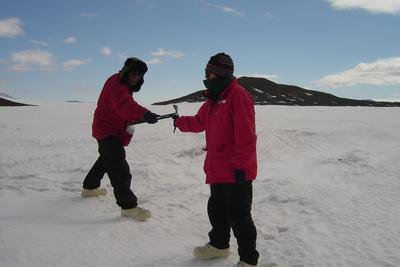
7. Regina assisting Rusty as he steps over the hidden crevasse.

8. Scott and Laurie getting ready to sample.
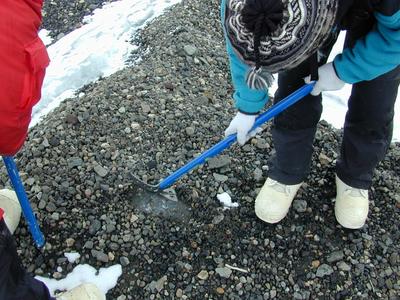
9. Laurie uses her ice axe to expose the glacial ice below the rocky soil.
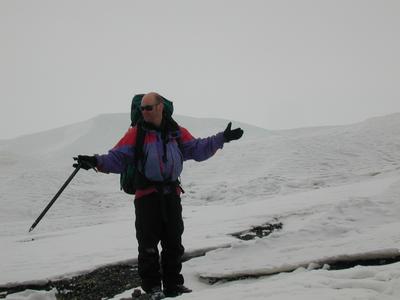
10. Our mountaineer, Brian, helps point us to the safest hiking route.
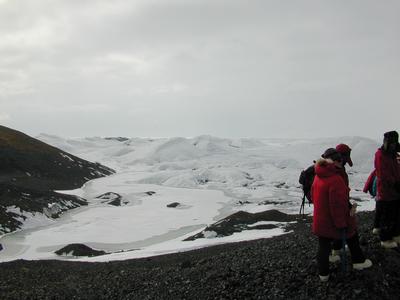
11. Even larger pressure ridges. These were caused as the glacier pushes up against the land. Note: we didn’t drive over these, we just saw them as we sampled.
Contact the TEA in the field at
.
If you cannot connect through your browser, copy the
TEA's e-mail address in the "To:" line of
your favorite e-mail package.
|
